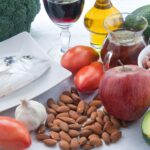Understanding how energy flows through an ecosystem is crucial, and a food web is an excellent tool for visualizing these complex relationships. This guide will walk you through the process of creating a food web, explaining the roles of different organisms and the impact of changes within the ecosystem.
Understanding Food Chains vs. Food Webs
Before diving into how to make a food web, it’s important to understand the difference between a food chain and a food web. A food chain is a linear sequence of organisms where each organism feeds on the one before it, illustrating a simple path of energy transfer. In contrast, a food web is a more complex and realistic representation, showing the interconnectedness of multiple food chains within an ecosystem. It illustrates how various organisms rely on each other for sustenance.
Key Components of a Food Web
Every food web consists of three primary types of organisms: producers, consumers, and decomposers.
- Producers: These are autotrophic organisms, primarily plants and algae, that produce their own food through photosynthesis. They form the base of the food web.
- Consumers: These are heterotrophic organisms that obtain energy by consuming other organisms. They are further divided into:
- Primary Consumers: Herbivores that feed directly on producers.
- Secondary Consumers: Carnivores or omnivores that feed on primary consumers.
- Tertiary Consumers: Carnivores that feed on secondary consumers.
- Decomposers: These are organisms, such as bacteria and fungi, that break down dead organic matter, recycling nutrients back into the ecosystem.
Steps to Creating a Food Web
Now, let’s outline the steps on How Do I Make A Food Web:
- Identify the Ecosystem: Choose a specific ecosystem you want to represent, such as a marine ecosystem, a forest, or a grassland.
- List the Organisms: Compile a list of organisms present in the chosen ecosystem. Include a variety of producers, consumers (primary, secondary, and tertiary), and decomposers.
- Determine Feeding Relationships: Research and identify which organisms consume which other organisms. This information is crucial for constructing the food web.
- Draw the Food Web: Represent each organism with a picture or name. Use arrows to connect organisms, with the arrow pointing from the organism being eaten to the organism doing the eating. The arrows represent the flow of energy.
- Label Trophic Levels: Identify and label the different trophic levels (producers, primary consumers, secondary consumers, tertiary consumers) within the food web.
- Analyze the Interconnections: Examine the completed food web and analyze the complex relationships between organisms. Consider the potential impact of removing or altering the population of one species on the rest of the web.
Example: Marine Food Web
In a marine food web, phytoplankton (microscopic algae) are the primary producers. Zooplankton (small crustaceans) consume phytoplankton, making them primary consumers. Small fish then feed on zooplankton (secondary consumers), and larger fish (tertiary consumers) prey on the smaller fish. Decomposers, such as bacteria, break down dead marine organisms, returning nutrients to the water for phytoplankton to use.
The Impact of Removing a Species
One of the key benefits of creating a food web is understanding the potential consequences of removing or reducing the population of a single species. If a primary consumer is removed, the producer population might increase, and the populations of secondary and tertiary consumers that rely on the primary consumer may decline. This illustrates the interconnectedness and delicate balance within an ecosystem.
Tools and Resources
You can create a food web using various tools and resources:
- Paper and Pencil/Chalk: Draw the food web manually, using images or names of organisms.
- Digital Tools: Use software or online platforms designed for creating diagrams and flowcharts.
- Organism Cards: Create cards with images and information about different organisms, then arrange them to form a food web.
Variations and Extensions
- Focus on a Specific Ecosystem: Create food webs for different ecosystems and compare their structures and relationships.
- Investigate Human Impact: Analyze how human activities, such as pollution or overfishing, can affect food webs.
- Simulate Ecosystem Changes: Model the impact of introducing a new species or removing an existing one.
Common Misconceptions About Food Webs
It’s important to address some common misconceptions about food webs:
- Food webs are static: Food webs are dynamic and constantly changing due to factors like seasonal variations, climate change, and species interactions.
- Organisms only belong to one trophic level: Some organisms, particularly omnivores, can occupy multiple trophic levels within a food web.
- Removing one species has minimal impact: As discussed earlier, the removal of even a single species can have cascading effects throughout the entire food web.
Conclusion
Learning how do I make a food web is a valuable exercise for understanding the complex interrelationships within ecosystems. By identifying producers, consumers, and decomposers, and mapping their feeding relationships, we can visualize the flow of energy and the potential consequences of disruptions. This knowledge is essential for promoting conservation and sustainable management of our planet’s ecosystems.
